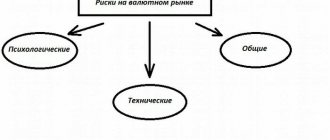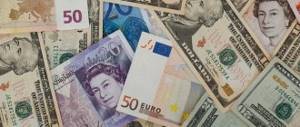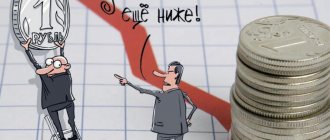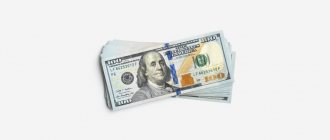Hello!
Those who are at least a little interested in the economic situation in the country and the world remember 2015. At this time, the currencies of Norway, Turkey, Russia, Kazakhstan, and Ukraine devalued.
Stable currencies such as the Chinese yuan, the Swiss franc, the Japanese yen and the euro also fell sharply in value against the dollar. Do you know that from time to time global currencies not only decrease in price, but also increase, i.e. revalued? I will show with examples and explain whether revaluation is a positive or negative process.
Why is revaluation carried out?
It is generally accepted that currency revaluation brings positive results for the economy of a country that is in crisis. In a stable economy, this process can also cause negative consequences.
The strengthening of the national currency is most often of a piecemeal nature. Thus, the strengthening of the ruble occurs due to the purchase of rubles on the market from the foreign exchange reserves of the Central Bank. But at the same time, this process can also be spontaneous.
For private investors, the revaluation of the national currency is a good opportunity to increase portfolio diversification. To do this, you need to invest money in foreign assets at reasonable prices. During this period, the most profitable solution would be to purchase securities denominated in dollars. You should also pay attention to gold. Due to this, it will be possible to make money on financial changes. At the same time, price growth will be stable.
Examples of devaluation of currencies in Russia, Ukraine, Kazakhstan
The term “devaluation” is well known and intuitively understood by millions of Russians, Ukrainians, and Belarusians in the 90s. twentieth century and the subsequent depreciation of national money.
Thus, in the Russian Federation the USD RUB exchange rate (price of $1 in rubles) was
- on January 1, 1998 (before the global crisis) there were 6.2 rubles per $1;
- 1999 = 20.6 rubles;
- 2002 = 30.12 rubles;
- 2010 = 27.5 rub.;
- 2014 = 45 rubles;
- 2020 = 61 rubles, i.e. over 22 years, the Bank of Russia devalued the Russian ruble by 983% against the US dollar.
In Ukraine, the exchange rate is USD UAH (worth $1 in Ukrainian hryvnia)
- in June 1998 was 2.05 hryvnia for one dollar;
- 1999 = 5.55 UAH;
- 2002 = 5.32 UAH..;
- 2010 = 8.00 UAH;
- 2014 = 15.6 UAH;
- 2020 = 24 UAH, i.e. over 22 years, the National Bank of Ukraine devalued the hryvnia by 1170% against the USD.
In Kazakhstan, the exchange rate is USD KZT (worth $1 in Kazakhstani tenge)
- in June 1998 was 76.5 tenge per dollar;
- 1999 = 132 tenge;
- 2002 = 152 tenge;
- 2010 = 147 tenge;
- 2014 = 183 tenge;
- 2020 = 378 tenge, i.e. over 22 years, the National Bank of Kazakhstan devalued the tenge by 494%.
For comparison: for the specified period, devaluation
- pound sterling was 29% (GBP USD exchange rate fell from 1.6870 to 1.3084 in 22 years)
- Polish zloty by 119% (USD PLN rate as of January 1, 1998 was 1.76, in 2021 = 3.86)
- Georgian lari by 120% (USD GEL exchange rate, respectively, 1.31 and 2.89);
- Belarusian ruble by approximately 61,788%. The figure is huge, so we will give detailed explanations.
Main reasons
There is no need to strengthen the ruble under normal market conditions. Most often, it is initiated by the state after a careful and balanced calculation of all consequences. The main reason for the revaluation is increased inflationary pressure. This is followed by a depreciation of the national currency and, as a result, the cost of goods and services increases.
The second reason is that it is necessary to increase the share of imports and increase foreign capital and investment. The strengthening of the national currency also promotes investment. A positive consequence of revaluation in this case is a reduction in inflation. Further, the rate of growth in prices for goods and services decreases, and the purchasing power of the population increases.
Currency wars
Currency wars are caused by the deliberate devaluation of the national currency by Central Banks in order to create additional barriers to imported goods and provide a competitive advantage for exporters.
Above, we have already talked about the tension between the United States and China after the White House accused the Chinese side of deliberately weakening the yuan. The Americans struck back by imposing additional duties on Chinese goods. China was outraged and decided to also increase duties on American goods. The world's two largest economies are on the brink of a major trade war. Its consequences would affect the entire world.
Who is strengthening the ruble
The decision on currency revaluation is made by the Central Bank. Legally, they are responsible for the operation; in fact, it is the government. Most often, currency strengthening is carried out as a comprehensive solution to combat inflation. It also makes it possible to effectively contain the growth of the country's balance of payments surplus.
The revaluation mechanism is triggered by currency interventions of the Central Bank. Thus, the ruble is purchased in large quantities for foreign currency. This creates an artificial increase in demand. At the same time, the exchange rate also increases. If a country’s economy fits the definition of “healthy,” then it is characterized by a period of slow appreciation. Thus, the strengthening of the ruble is carried out gradually.
Consequences for the population
The consequences of revaluation can be divided into two groups: positive and negative. Among the positive ones are:
- producer prices for end consumers are reduced;
- supply is growing on the domestic market - this is what exporters are focusing on;
- the availability of goods for the population increases;
- Imports increase - due to the more “expensive” ruble, more goods can be purchased abroad;
- the actual income of the population increases;
- The inflation rate decreases - this is facilitated by higher purchasing power.
Even taking into account the significant advantages, currency revaluation as an economic phenomenon has a number of disadvantages.
Negative consequences
Negative consequences include:
- the competitiveness of exported goods decreases;
- the influx of tourist flow from outside is decreasing;
- the influx of investment into the economy is decreasing;
- exports decrease - selling goods abroad brings in less money;
- own production decreases;
- The country's budget surplus decreases - money goes to foreign exchange interventions.
Due to negative consequences, the income level of the population may fall. That is why it is advisable to revaluate the exchange rate only when the interests of importers are much more profitable than the needs of domestic producers.
Example of the Zimbabwean currency: what is devaluation like when the economy stagnates?
Unlike Japan, African Zimbabwe has never had large investors ready to artificially support the exchange rate of its national currency, so it (as well as the Russian Federation in 1991-1998) provides clear examples of the level of devaluation that stagnation and default in the economy can lead to .
In the second half of the 2000s, the devaluation of the Zimbabwean dollar reached such a level that bills worth trillions of ZWL were put into circulation . Every citizen of this African country overnight became a multi-billionaire. In 2008, the authorities carried out a redenomination by printing new money that immediately dropped 10 zeros. But currency reform cannot be carried out without reforming the economy, i.e. without removing the reasons that caused the devaluations. As a result, in just the next 1 year, the currency devalued again to the level of trillions in banknotes appearing in circulation.
What are the Zimbabwean government and its financial regulator doing? He denominates again, this time removing 9 zeros. The result is expectedly zero, devaluation continues at a tremendous pace. As a result, after another 3 months the regulator threw its hands up - since April 2009, ZWL has sunk into oblivion.
Connection with devaluation
Devaluation is a depreciation of the national currency or, in other words, depreciation of the ruble. This phenomenon often occurs when a country's financial balance has been in deficit for a long time.
Revaluation of the national currency is a similar, but reverse process. The national currency, in this case the ruble, is strengthening. Thus, the budget surplus is exchanged for an increase in the exchange rate. It should be borne in mind that this requires “extra money” from the budget, so this process is carried out much less frequently than devaluation.
Forecasting revaluation
Taking into account the fact that there are several reasons for revaluation, the Big Mac index is used as the main forecasting tool. It is based on the assertion that a fair exchange rate should equalize the cost of the average food basket in different countries. This rule is also called purchasing power parity.
However, other indicators are also available for making forecasts. Thus, it is possible to predict increased demand and the growth of the ruble exchange rate if we take into account how in demand ruble investment instruments are.
Revaluation for the population
At first glance, it may seem that the revaluation of the national currency is an exclusively positive process. But at the same time, it entails high risks for the economy. It is better for investors to diversify their portfolio during this period. It is almost impossible to predict the beginning and end of this process with maximum accuracy. Therefore, it is better to take into account general trends in the global market.
Currency revaluation is not a frequent occurrence, since budget funds can be spent not only on strengthening the exchange rate. Therefore, currency appreciation is only considered as a tool when there is a very large budget surplus or when the government is interested in buying out foreign companies.
For countries with large exports, including Russia, revaluation can bring both pros and cons. The advantages will be an increase in citizens' incomes and a decrease in inflation, and a significant disadvantage is the risk of losing the foreign market.
Is the Japanese yen ready for devaluation or will revaluation continue?
The Japanese yen has been considered a “safe haven” currency by financial analysts for almost 40 years , having strengthened (revalued) by almost 390% from 300 yen per dollar in 1975. up to 77 in 2012 — see the picture above and the online chart of USD JPY.
What's next for the Japanese yen? Read on for a fundamental analysis of the problems of Japan and its economy that the business press has not yet written about: Masterforex-V: will the shares of the “blue chips” of Japan (Sony, Canon, Olympus, Panasonis) go to the bottom in the coming global crisis?
When and under what conditions can the devaluation of the yen begin ? You will find out the answer when you come to study. You have already understood that the secrets of Forex are needed not only by professional traders and investors, but also by every wealthy person in order to increase and not lose their capital when changing trends in currencies, cryptocurrencies, stock market securities (bonds, ) and commodity exchanges (gold futures , Brent oil, platinum, silver, etc.). It is all interconnected, but only a few know about it.
Register for training at the Masterforex-V Academy using the link here or at the bottom of the article.
Examples of currency strengthening
Recent examples of revaluations include:
- Japanese yen. Due to the actions of the Bank of Japan, the yen exchange rate gradually increased, and in 1998, the yen managed to rise from 136 to 111 units per dollar in 3 days.
- CNY. Revaluation as an economic tool is regularly used in China. As an example, in 2005 the yuan rose by 2% per day. Three years later, the Chinese national currency “grew” by 20%.
At one time, revaluation was carried out in Austria, the Netherlands and Switzerland. Thus, the example of Switzerland is one of the most illustrative. Until 2015, the country maintained a rigid exchange rate against the US dollar and the euro, using manual, centralized methods. But the problem became too high an export orientation, after which Switzerland abandoned the fixed exchange rate and in one day the franc rose by 41%.
What is it in simple words
Revaluation means an increase in the exchange rate of one currency in relation to another or to gold. A simple example. Let's say that 1 dollar in relation to the ruble costs 30, and 1 euro = 45 rubles. After revaluation, these values will be lower. So, $1 will become equal to, for example, 25, and €1 will reach 38 rubles.
Why is it needed?
The revaluation procedure is most often used to reduce inflation rates, as well as to increase the purchasing power of people.
Among the reasons we can highlight the need to withdraw domestic capital from the country and import imported products. However, artificial growth of the national currency is an extreme measure; such a procedure is resorted to quite rarely. In a healthy economy, revaluation is not required: it happens at a slow pace.
Who benefits and disadvantages
Importers are interested in revaluation, as they have the opportunity to import products into the country at lower prices than on the local market. And sell, on the contrary, at prices higher than your own market.
Local exporters face unfavorable conditions. Due to the rise in the value of the national currency, the cost of production increases. In other words, they produce products in their country that are more expensive than they were, but sell them cheaper.
Advantages and disadvantages
How does revaluation affect the country’s domestic economy? I will list the positive and negative aspects of this process.
Pros:
- inflation rates are slowing down;
- the main consumers of the products do not leave the domestic market;
- the central bank has the opportunity to purchase the currency of another state at a lower price;
- the surplus begins to slow down;
- prices for domestic products are falling.
Minuses:
- export becomes unprofitable;
- foreign goods are oversaturating the market;
- the investment attractiveness of the country is reduced: it is unprofitable for foreign investors to keep their capital here.
I will add that the number of tourists is decreasing: visiting the country is becoming expensive.
Revaluation in Russia
The strengthening of the exchange rate in Russia in 2014 was forced. After anti-Russian sanctions were introduced, as well as due to changes in world oil prices, the ruble exchange rate began to fall sharply. In order to keep the country's economy in a stable position and prevent a large-scale financial crisis, standard measures were taken.
The base rate was increased to 17% per annum. This made it possible to completely eliminate speculation in the foreign exchange market. Due to this, the current rates on loans and deposits were established. The ruble exchange rate has stabilized, but domestic production (the GDP coefficient is used for calculation) decreased by 3%. In addition to the measures taken by the Central Bank, the fall in the euro exchange rate against the dollar also had a positive effect.
How to identify currencies that are ALREADY ready for devaluation
According to the Masterforex-V trading system, trend reversals (from devaluation to revaluation or vice versa) are determined thanks to trend reversal patterns and patterns of its continuation, when one of the trend reversal patterns is formed at strong levels of accumulation of limit orders (respectively, resistance or support). This can be “head and shoulders”, triple and double top or bottom (shown in the example below), “diamond”, “spike”, “cup with handle”, etc. They can (when changing volumes - see green and red candles of the indicator) cause a trend change.
An example of a reversal of a bearish trend to a bullish one through a “double bottom” pattern , formed at the level of a large accumulation of buyer limit orders. Please note that the analysis of the volumes of “green” candles on buy significantly exceeds red candles on sell in the balance of market supply and demand.
Trend continuation patterns - flag or pennant, wedge, rectangles, triangles - symmetrical triangle, ascending and descending triangles, expanding triangle, gap (Gaps), etc.
More details:
- Resistance and support levels according to the trend;
- Real and false breakout and rebound from resistance and support levels;
- Charles Doe: theory of technical analysis and know-how Masterforex-V;
- What is a turning point inside a trend Pivot Points.
Revaluation for investors
In Russia, the process of revaluation did not occur suddenly and sharply. Therefore, if we take into account all the factors of macroeconomic relations, the investor will be able to determine the increase or decrease in the exchange rate. Thus, the risks of invested finances will be reduced to the maximum, and it will also be possible to increase capital.
To avoid possible risks, you should refrain from buying securities of countries with high inflation rates, as well as growing balance sheet deficits. It is always necessary to take into account currency fluctuations. For example, if the first signs of a strengthening of the exchange rate become noticeable, investors should transfer part of their assets from foreign currency to national currency. This will significantly increase the portfolio's profitability.
You can find more useful information by reading my “investment basics” section. If you couldn’t find answers to your questions in the article, write to me using the contacts listed on the site!
Example: Is the Canadian dollar being devalued or revalued?
Let us recall that over 22 years (1998-2020), the Canadian dollar “rose in price” by 11% against the American dollar. If you carefully examine the chart below for USD CAD on the MN timeframe, you will find many OTHER clarifying FACTS:
- the strongest revaluation (strengthening) of the Canadian dollar was from January 2002 to October 2007. (from 1.6197 to 0.9061) and amounted to almost 79% or 7129 exchange points. CAD was more expensive than its American “namesake” for half a year, and all the “serious” media of the world (from The Wall Street Journal and Reuters to RIA Novosti and Lenta.ru) explained the “pattern” and “logicality” of this revaluation, forcing millions of people in the world buy the Canadian dollar... at the very peak of its strengthening. Can you guess what happened next?
- since November 2007 and to this day there is a devaluation of the Canadian dollar , in which the currency pair has been in a rigid flat for 2 years between strong levels of order accumulation at 1.2830 and 1.3564.
- trading plan : breaking through and consolidating BEYOND the specified flat levels will lead to a strong bullish or bearish trend with the goals indicated in our figure.
- AO_ZOTIK - pay attention to how the Masterforex-V Academy’s proprietary indicator clearly shows the boundaries of devaluation and revaluation through its divergences.











